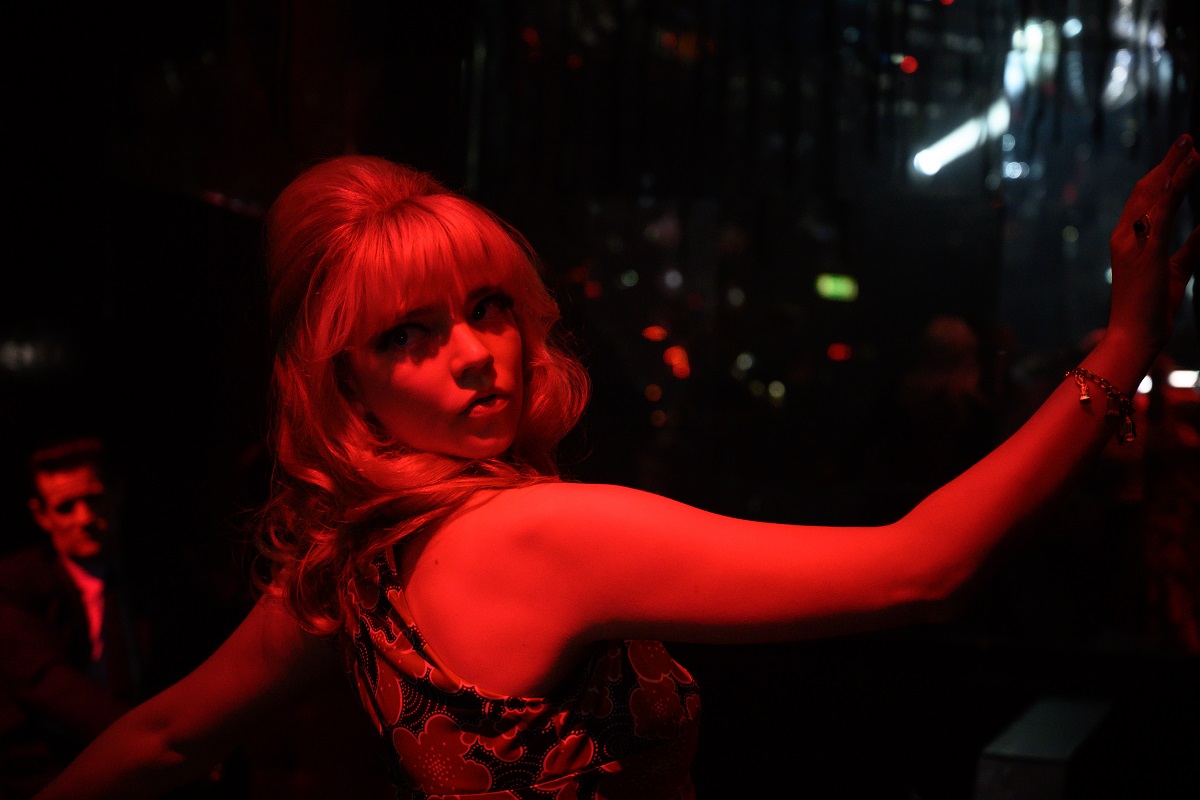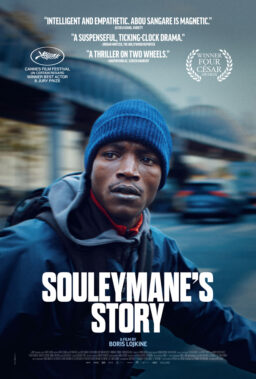Edgar Wright is a genre filmmaker who believes that more is more, and after the Venice premiere of his new horror picture “Last Night in Soho,” I heard from more than one colleague that the film could have done with at least one less breathless pursued-down-an-alley-by-horrific-specters set pieces. But when it’s Wright who’s providing the more, I agree with his philosophy. I’m consistently partial to Wright’s films—I think they’re spectacularly well-designed and executed, among other things. Very cinematic, as some are fond of saying. I teach film at a New York university (actually, it IS New York University) and Wright is also well-liked by my students, which is a godsend for me, because Wright’s work gives me a portal through which to guide said students to an appreciation of the cinema classics that Wright learned his stuff from.
The British director has gotten critical disapprobation in the past, from varied corners, for making overly laddish pictures. “Last Night in Soho” redresses that a bit by centering (as they say) female characters. Arguably these are in some ways noticeably male-conceived female characters (despite the fact that Wright co-wrote the script with Krysty Wilson-Cairns), but we can’t help who we are. When we’re male. Actually that’s one of the themes of the movie, taken to definitively toxic extremes.
“Last Night in Soho” is about Ellie (Thomasin McKenzie) a young woman from the sticks (that would be, in this realm, Cornwall) who’s realizing a dream to study fashion design in London. Looked after by her loving grandmother (Rita Tushingham), Ellie is both benignly haunted by her dead mother and sharing similar mental health challenges. These aren’t helped when she gets to North London and meets a dorm mate from hell (Synnøve Karlsen) who immediately goes mean girl. Ellie’s so instantly stressed out she can’t see that the male student who wants to befriend her is a good egg among bad ones.
And the bad ones are bad as they come. Out at the pub, one college lout tries a pickup line beginning with “My dick just died” and requesting Ellie let him, therefore, bury it in a specific spot. Ellie is repelled and Jocasta tells her to “play the game.”
That’s the implied instruction given to Sandie, a beauty of Swinging London in the 1960s who begins inhabiting Ellie’s dreams after Ellie vacates the dorm and moves into a bedsit in the house of stern Mrs. Collins (Diana Rigg, in her last film role). Sandie, who moves with incredible confidence as the vastly more insecure Ellie peers at her through mirrors (the effects here are particularly bravura) herself has dreams of making it as a singer. She’ll do “anything” to realize that ambition, she tells her instant boyfriend and would-be manager Jack (Matt Smith). But as the dreams turn to nightmares, evening after evening, “anything” becomes things Sandie never would have imagined.
Anya Taylor-Joy, a brilliant actress and notable clothes person, is dazzling as Sandie, whose style inspires Ellie’s own designs. Her enemy turns out to be the entire world of men. One man in Ellie’s present-day real life who’s causing Ellie trouble is a nameless chap played by Terrence Stamp. When Ellie comes to believe she’s caught up in a dream-world restaging of a real-life murder, she draws dire conclusions.
It would be reductive to call this Wright’s “Me Too” movie, but in some respects that’s not an inapt way of putting it. Of course it nods to other female-centered horror pics such as “Repulsion” and “Drag Me To Hell.” Aside from its suspense, I found a real emotional undercurrent in the movie, perhaps attached to my own infatuation with Swinging London, which I watched from a great distance as an ultra-callow ultra-youth. (I was, seven.) The film brought me to tears a couple of times near the end, partially due to its use of a classic Cilla Black song. Maybe there’s something in the water out here in Venice, I don’t know. But I fell hard for “Last Night in Soho.” It’s an estimable, genuine horror movie that also manages to say something real—without trying to “elevate” the genre. The genre, as Wright well knows, can be good enough as it is and has been.

Speaking of, um, genre, earlier this week I caught “Inferno Rosso: Joe D’Amato sulla via dell’eccesso,” which translates loosely as “Red Inferno: Joe D’Amato on the Road of Excess,” which is a knotty title for a short film about a knotty filmmaker. D’Amato is a vexing, hell, you could even say divisive figure among connoisseurs of Psychotronic and/or extreme (we could even call it aberrant) cinema. Born Aristide Massaccesi in 1936, D’Amato died in 1999 at age 62 with almost 200 directorial credits. Aristide, as his friends, relatives, and collaborators refer to him throughout this picture, had lofty beginnings. He apprenticed with Renoir and De Sica. He was apparently one of those characters who was happiest with a camera in hand. This inclination led him to some unusual choices with respect to what he was filming, especially once he started his own production company and began to chase niche markets. D’Amato movies include sex-tourism stuff laced with perversion and gore—with Indonesian-Dutch actress Laura Gemser in the title role, he made several notorious “Emanuelle with one m” movies (the Sylvia Kristel sex franchise featured an Emmanuelle with two Ms, just so you’ve got an idea of what kind of marketing you’re dealing with here) that remain consciousness-elevators (in the inverse sense of the term) to this day. Then there were “let’s outdo Lucio Fulci” horror pictures such as “Beyond the Darkness” and “Anthropophagus” (the documentary explains, helpfully, that in the scene in the latter wherein the lead whatever-he-is rips a fetus from a pregnant woman’s body and eats it, the fetus is actually a rabbit—whew). And apocalyptic genre ripoffs like “Endgame” (a microbudget “Mad Max” riff, not a Beckett adaptation). And porn. Lots and lots of porn.
The reminiscences of friends and colleagues (including great horror directors Lamberto Bava and Michele Soavi—to whom D’Amato gave his first break—and Spanish camera buff Jess Franco) are engrossing. The contributions of those making a case for D’Amato’s artistic standing, including the Cinematheque Francaise’s Jean-François Rauger and American filmmaker Eli Roth, are a mixed bag. Rauger is interesting when he talks of “Italian cinema filming its own downfall” but is on far less solid ground when speaking as if D’Amato’s career followed an overt auteurist scheme. And Roth’s enthusiasm is not quite infectious—one gets what he’s trying to convey about what’s potentially compelling in D’Amato’s work, but I think the directors, Manilo Gomarasca and Massimiano Zanin could have sought out critic Tim Lucas to buttress these points. Similarly, in treating D’Amato’s porn era, they might have gotten an interview with his frequent star, Rocco Siffredi, instead of “treating” the audience to a minutes-long montage of cropped-to-softcore, red-tinted stills from the smut. Long story short, when D’Amato’s company started to go belly-up, porn was the only thing he could churn out that guaranteed a return. D’Amato apparently disliked shooting it. In any event, though, I guess I understand why David Hasselhoff, Linda Blair, and Tisa Farrow, all of whom starred in a D’Amato production, aren’t talking heads here.












